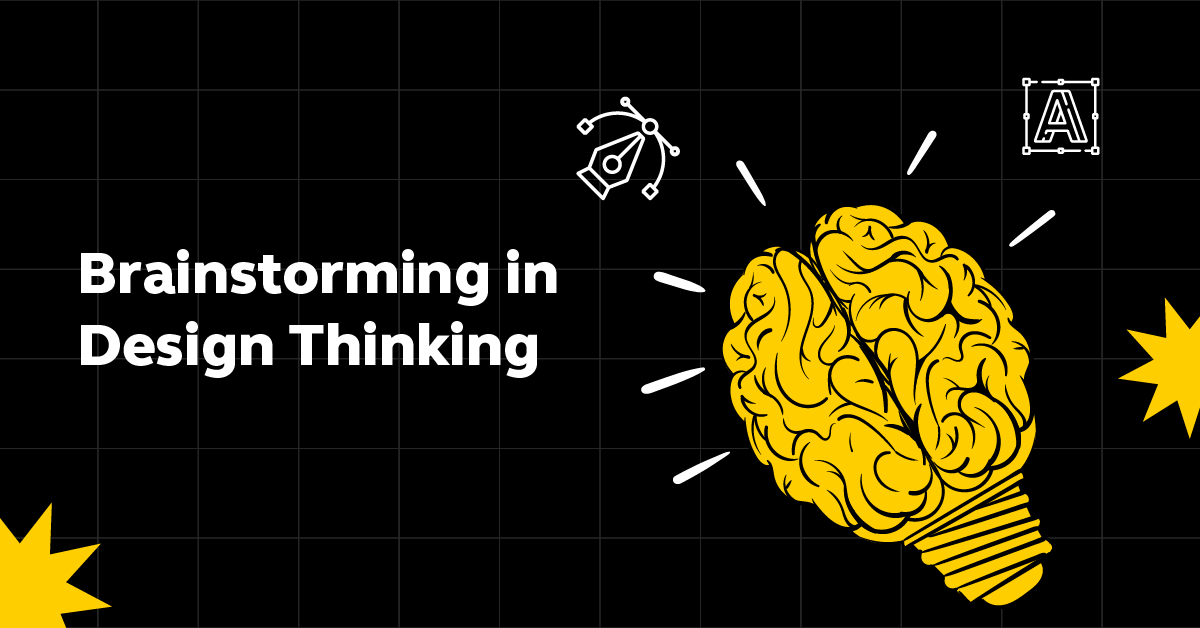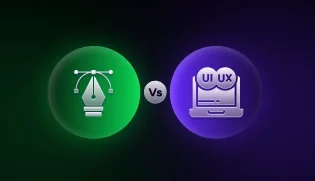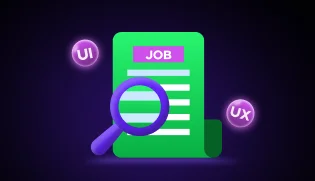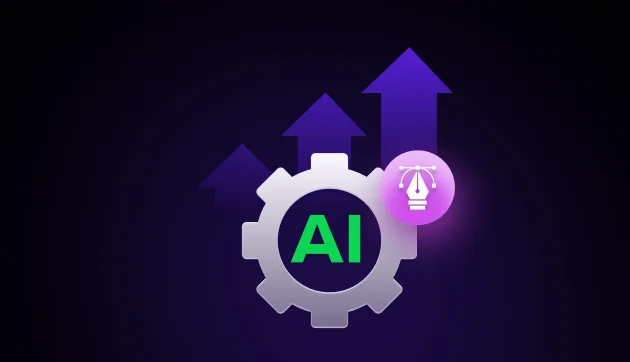![How to Get a UI/UX Job With No Experience? [2025] 1 Post thumbnail](https://www.guvi.in/blog/wp-content/uploads/2023/12/Feature-image-How-to-Get-a-UIUX-Job-With-No-Experience.webp)
How to Get a UI/UX Job With No Experience? [2025]
Mar 26, 2025 4 Min Read 6552 Views
(Last Updated)
Are you eager to start a career in UI/UX design but worried about your lack of professional experience in the field? The good news is that it is possible to land a job as a UI/UX designer without prior industry experience.
In this comprehensive guide, we will walk you through the steps you can take to break into the UI/UX job market and showcase your value and expertise.
Table of contents
- I) Understanding UI/UX Design: The Basics
- II) The Importance of Real-world Experience in Landing a UI/UX Job
- III) Developing Your Technical Knowledge and Skillset
- IV) Cultivating Core UI/UX Competencies
- V) Learning from Successful Career Transitions in UI/UX Design
- VI) Applying Everywhere: Casting a Wide Net
- Concluding Thoughts...
- Is it hard to get a job at UX UI?
- How do I make a UX resume with no experience?
- Is UX design harder than coding?
- Which language is best for UX design?
I) Understanding UI/UX Design: The Basics
Before we delve into the strategies to break into the UI/UX job market, let’s first understand what UI/UX design is all about. UI/UX design is the art of creating user-friendly interfaces and seamless user experiences for digital products.
While it may seem like a field that requires a strong background in tech or design, the truth is that the core competencies of a successful UI/UX designer are transferable skills that can be learned in various other professions.
At its core, UI/UX design is all about empathy and communication. The role of a UI/UX designer is to advocate for the needs of the end user throughout the design process. This includes conducting research, understanding user preferences, and ensuring that the final product meets or exceeds user expectations.
If you have experience in jobs that require strong communication and empathy, such as being a barista or a teacher, you already possess valuable skills that can be applied to UI/UX design.
While technical skills are important in UI/UX design, they can be taught and developed over time. What truly sets successful UI/UX designers apart are core competencies such as empathy, communication, organization, and critical thinking.
These skills are not industry-specific and can be cultivated and honed regardless of your prior experience with resources like GUVI's UI UX Design Course taught by top industry experts who help you build an incredible portfolio of projects and provide extensive placement assistance!
II) The Importance of Real-world Experience in Landing a UI/UX Job
You might be wondering how crucial real-world experience is in securing a UI/UX design job. The truth is that employers value practical experience and the ability to showcase your skills tangibly. While having a line on your resume that demonstrates your past work experience is helpful, it is equally important to be able to discuss and demonstrate your work during interviews and in your UI/UX portfolio.
To gain real-world experience, you can start by creating dummy UI/UX case studies. These case studies allow you to showcase your design process, from research to prototype, and explain the design iterations and decisions you made.
For example, you can create a UI/UX project for a liquor delivery app or explore topics like NFT marketplace apps or fitness apps. Additionally, you can even propose new features for existing products to demonstrate your problem-solving skills and ability to enhance user experiences.
Once you have created these case studies, it’s crucial to showcase them in a professional portfolio. Creating a personal website can greatly enhance your chances of getting noticed by potential employers. Invest in a domain name that reflects your brand and design your website to highlight your UI/UX projects and make your resume easily accessible.
A well-designed personal website adds a professional touch to your profile and allows recruiters to easily navigate through your work.
Also Read 10 Real-World UI/UX Applications: The Magic of UI/UX
III) Developing Your Technical Knowledge and Skillset
While core competencies and transferable skills are essential, it is equally important to develop your technical knowledge and skillset in UI/UX design. Fortunately, there are numerous resources available to help you learn and enhance your skills in this field.
Start by immersing yourself in the UI/UX design world through online resources such as Online courses, Google UX certification courses, and free design courses. These platforms offer a wealth of knowledge to help you grasp the fundamentals of UI/UX design and familiarize yourself with popular design software like Figma.
In addition to online resources, enrolling in a UI/UX design program or boot camp can provide you with a structured learning experience and hands-on practice.
Look for programs that offer a practical approach, helping you develop core skills and create a professional portfolio. These programs often provide guidance and support for your job search, preparing you for interviews and helping you identify the right job opportunities to apply for.
IV) Cultivating Core UI/UX Competencies
As you embark on your journey to break into the UI/UX job market, it’s crucial to cultivate core competencies that will set you apart as a successful UI/UX designer. These competencies include communication, empathy, organization, and critical thinking, among others.
Improving these “soft skills” requires a commitment to personal growth and continuous learning. Seek feedback from colleagues, friends, and family to identify areas for improvement. Actively engage in communities of like-minded individuals, find mentors, read books, watch TED Talks, and listen to podcasts that focus on personal and professional development.
Consistently pushing yourself to grow in these areas will positively impact your work and make you a valuable asset to any UI/UX team.
V) Learning from Successful Career Transitions in UI/UX Design
1. Remember, you are not alone in your journey to break into the UI/UX job market without prior experience. Many individuals have successfully transitioned from unrelated fields into UI/UX design and are thriving in their new careers.
2. Their stories serve as inspiration and proof that it is possible to leap. Take the time to learn from the experiences of others who have successfully transitioned into UI/UX design.
3. Explore their stories and gain insights into the challenges they faced and the strategies they used to succeed. The UI/UX design community is filled with individuals who are willing to share their knowledge and offer guidance to newcomers.
4. Embrace the support and advice available to you as you embark on your career transition.
Also Read | How To Switch Career In UI/UX Design? Easy or Hard? [2025]
VI) Applying Everywhere: Casting a Wide Net
1. When it comes to applying for UI/UX design jobs, casting a wide net is essential. Don’t limit yourself to a few job applications; instead, apply to multiple opportunities to increase your chances of success.
2. Applying to at least 10+ positions is a good starting point. Utilize job platforms like LinkedIn, Naukri, and other official company job portals to find UI/UX design job openings.
3. However, to stand out from the competition, consider alternative methods such as engaging with recruiters on their LinkedIn posts about new job openings. This personalized approach can help you grab their attention and increase your chances of getting noticed.
4. Remember, landing your first UI/UX design job may take time, but persistence and a proactive approach will pay off. Keep refining your skills, building your portfolio, and applying for opportunities.
5. With the right skills and a compelling portfolio, you will eventually find a high-paying UI/UX job that values your talent and potential, regardless of your prior experience or design degree.
Additionally:
- Networking within the UI/UX design community can open doors to job opportunities and valuable connections. Attend design events, join online communities, and engage with professionals in the field.
- Participate in design challenges and competitions to showcase your skills and gain recognition.
- Stay up to date with industry trends and emerging technologies to demonstrate your passion and dedication to continuous learning, this will help you bag a wonderful UI/UX job.
Find Out The Future and Scope of UI/UX Design: A Comprehensive Overview
Concluding Thoughts…
Breaking into the UI/UX job market without prior experience can be challenging, but with the right mindset, dedication, and strategic approach, it is entirely possible.
Focus on developing your core competencies, creating a compelling portfolio, and continuously learning and growing in the field.
By combining transferable skills, technical knowledge, and real-world projects, you can position yourself as a valuable asset to potential employers.
Kickstart your UI/UX journey by enrolling in GUVI’s UI/UX Course where you will master technologies like AdobeXD, Illustrator, and Figma, and build interesting real-life UI/UX projects.
Also Read: Top 8 Product-based Companies for UI/UX Designers [Freshers]
Getting a UX/UI job depends on skills, portfolio, and networking. It can be competitive, but a strong foundation and relevant experience increase chances. Read the article above to gain a deeper understanding.
Craft a compelling UX resume by focusing on transferable skills, and personal projects, and showcasing your design process. Emphasize passion and willingness to learn, and try to depict what you stand for and the kind of work you would like to do.
Both require unique skills; UX emphasizes user empathy, while coding involves logical thinking. But mostly coding takes the cake here since you constantly need to be learning and remembering quite a lot.
There’s no specific language for UX design. Proficiency in tools like Sketch, Figma, or Adobe XD is crucial. Focus on mastering these tools and understanding design principles.



















Did you enjoy this article?